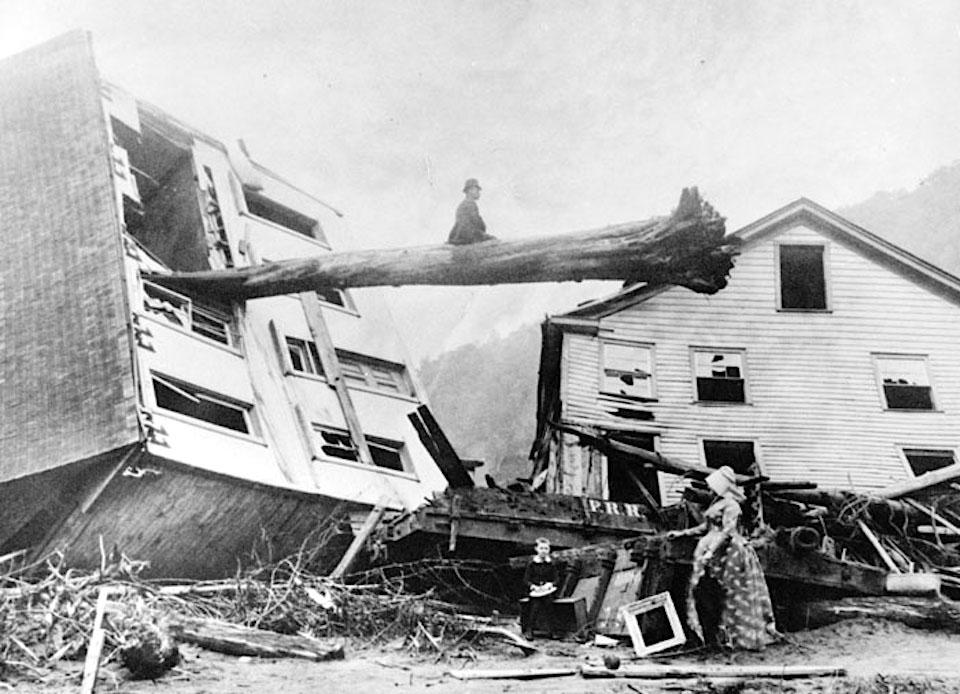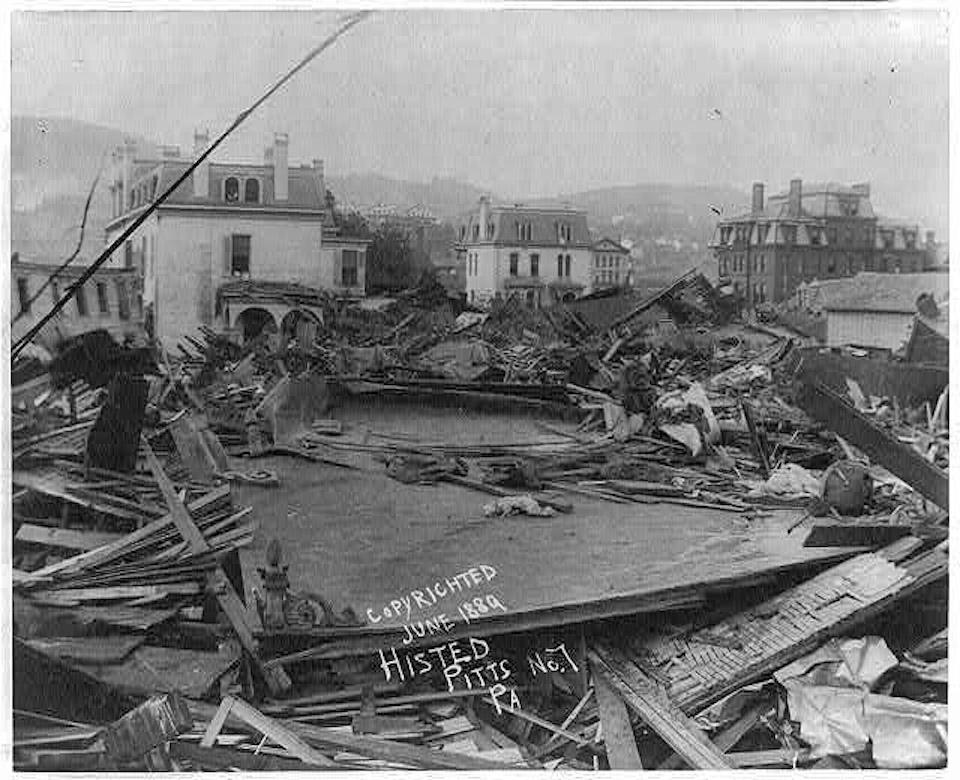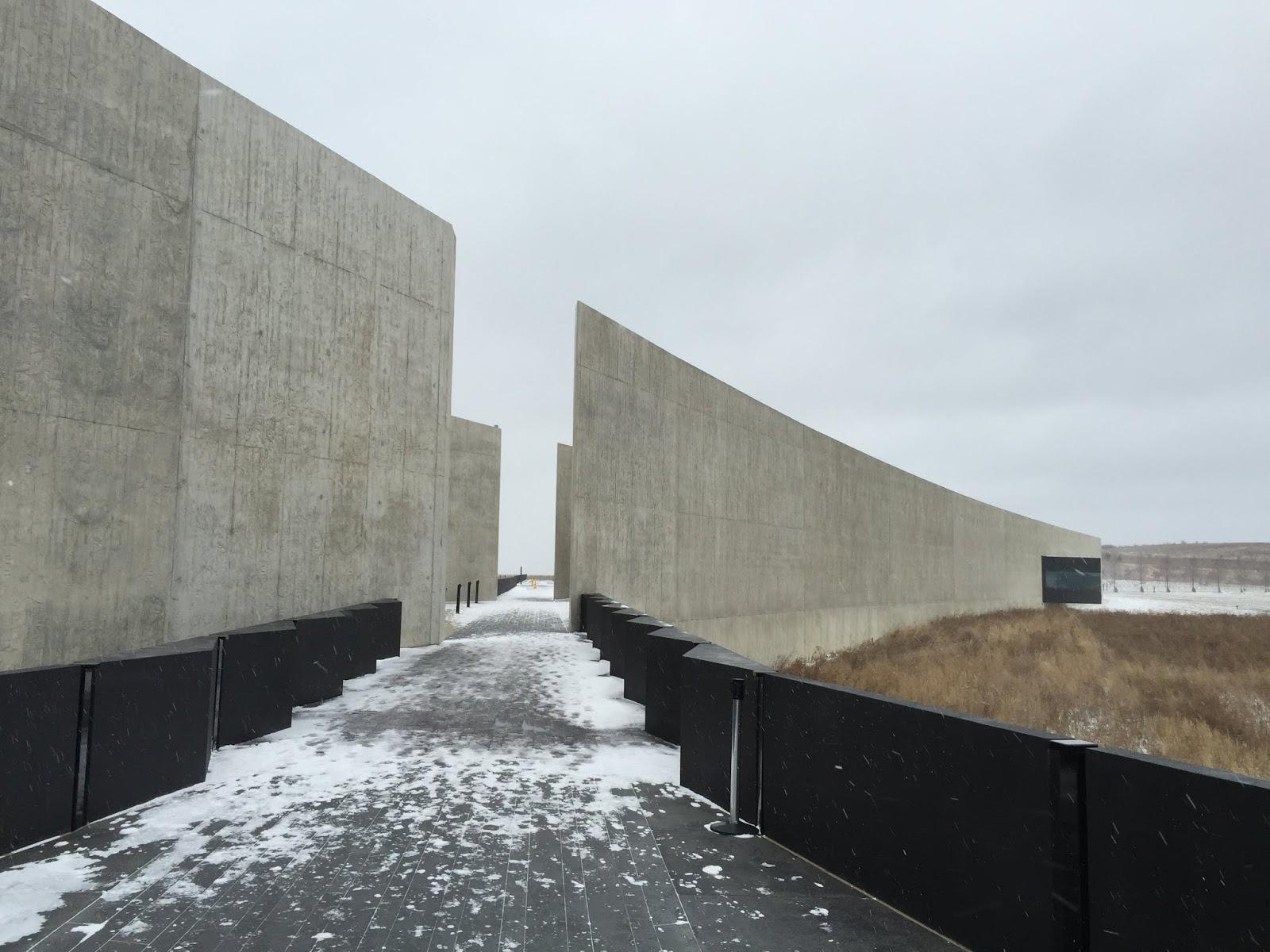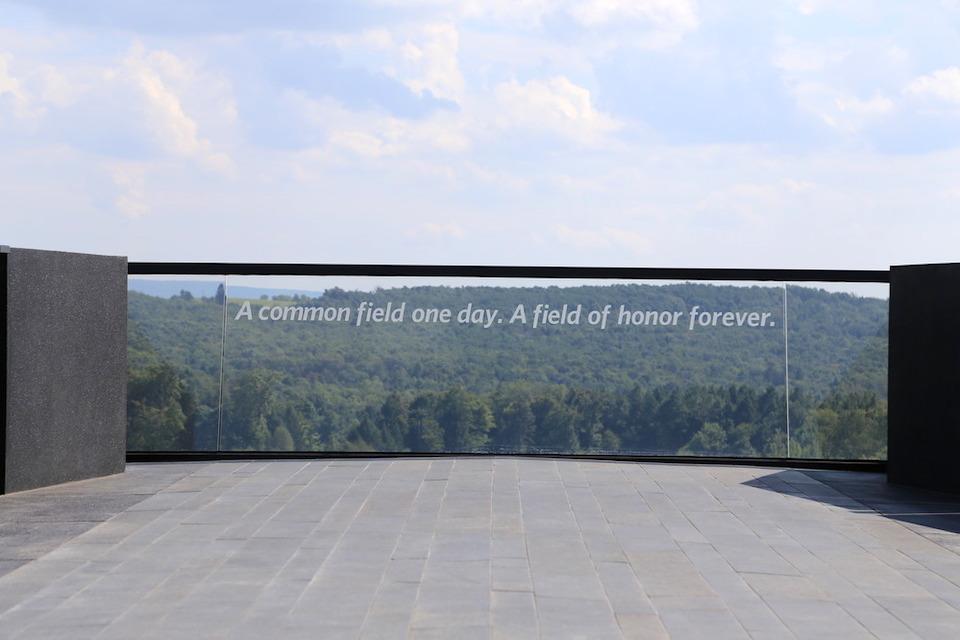
Johnstown after the flood/Library of Congress
110 Years Apart And Helping Us Understand Tragedies That Are Part Of America’s Fabric
By Jim Stratton
My girlfriend Craig and I were headed to Chicago for Thanksgiving, and with multiple days to make the trip from Washington, D.C., we naturally scanned our map for nearby national park units. Several in Pennsylvania, including memorials to Flight 93 and the Johnstown Flood, were not too far out of our way and provided new stamps for our little blue NPS passports. Little did we know that we’d hit the first winter storm of the season. Slick roads and blowing snow reminded us that, just like the weather, the events memorialized in Johnstown and Flight 93 were beyond the control of their victims.
After a beautiful balmy day touring Eisenhower National Historic Site near Gettysburg, the winds came up and the temperatures dropped as we headed over Highway 22 to Cresson, Pennsylvania. There was snow on the ground when we parked next to the railroad tracks across the street from The Station Inn, one of the more unique lodging establishments we’ve experienced on our visit-all-the-parks odyssey. This place was great in a very quirky kind of way. Cresson has a history as a major railroad town, and the Station Inn caters to railroad geeks from all over the world who sit and watch trains pass by the Inn’s windows. The breakfast conversation was filled with train nuance, such as how often a specific locomotive engine pulled through Cresson. And I thought collecting park stamps was a bit eccentric!!
Leaving the Station Inn, it snowed most of the morning as we traveled across a landscape blanketed in white to visit the Allegheny Portage Railroad National Historic Site before heading on to the Johnstown Flood National Memorial a few miles further down the road. While we were at the mercy of this winter storm, our little bit of snow didn’t compare to the rainfall that resulted in the massive dam failure above Johnstown, Pennsylvania on May 31, 1889, that killed more than 2,200 men, women, and children.
The Johnstown Flood National Memorial Visitor Center sits on the hillside just above the historic dam site and provides a good out-of-the-weather view up the South Fork of the Little Conemaugh River and the valley that once held Lake Conemaugh. Across the valley you can still see the South Fork Fishing and Hunting Club, once a private resort for rich folks from Pittsburgh perched on what was the historic edge of the lake. The 1889 clubhouse is now part of the memorial. Lake Conemaugh was held in place by an earthen dam poorly maintained by the club. This was before federal dam regulations, so no was paying attention to dam health.

Johnstown was devastated by the flood/Library of Congress
Fourteen miles down valley and 450 feet lower in elevation was Johnstown, a community of 30,000 people built around the steel industry and located right in the middle of the flood plain. Heavy rains weakened the dam to its breaking point, and at 3:10 in the afternoon of May 31, 1889, a 20-million-ton wall of water acted like a battering ram as it roared down valley at speeds of 40 mph. The wall of water and debris reached 75 feet high where the canyon narrowed. You can only imagine the destruction when it hit the town. A train traveling along the river’s edge was tossed around like it was a toy and its wreckage was intertwined with trees, mud, railroad tracks, livestock, and remnants of houses and other buildings scattered across a 45-acre debris field in what was once Johnstown. The damage was massive.
This is a sobering place, memorializing all those who died in this tragic disaster. The park’s movie, which is not for the faint of heart, does a very good job of instilling the fear felt by those trapped and overrun by the flood waters. Utilizing vintage Hollywood footage of recreated floods from the black-and-white movie era, the Park Service has crafted a film that has you feeling like you are in the middle of Johnstown in 1889 when the flood hit. There are only still photographs of the aftermath, so none of the footage in the film is real, but you sure felt like it was!
The aftermath and international response to this disaster are well documented in the visitor center’s displays. We spent several hours reading and learning about how the Red Cross, led by Clara Barton, arrived on-site to help with the survivors. We learned that more than $3.7 million (more than $100 million in today’s dollars) was privately collected for relief from all 38 states at the time and 14 foreign countries, making this truly an international response to a horrible tragedy. And there was litigation against the South Fork Hunting and Fishing Club, which successfully used the Act of God defense to avoid any responsibility. Clean-up of the 45 acres of flood-jumbled debris took years, but the town did rebuild. All that is left of the dam are parts of the earthen embankment on either side of the river, viewed not only from the visitor center but also from overlooks accessed by short walks on either side of the valley.
We left Johnstown in a pretty sober mood. But a day of remembrance was to be our theme as we drove 34 miles south down Highway 160 to the Flight 93 National Memorial and a more contemporary tragedy.

Concrete walls reflect the glide path of the doomed jet/NPS
Most of us still know exactly where we were when the planes hit the World Trade Center in New York. I recall the news services updating us that the Pentagon had also been hit. Lost to me at the time, amidst the graphic video of the Trade Center collapsing, was the fourth hijacked plane that didn’t hit a populated target. Instead, it crashed in a farmer’s field in Somerset County, Pennsylvania, about 18 minutes from what is thought to be its intended target, the U.S. Capitol. It was brought down by the crew and passengers who fought with the hijackers and caused them to crash, preventing a much larger disaster.
The gray, snowy day added to the ominousness of the two-story tall concrete walls that greet you on arrival at the Flight 93 National Memorial and direct you down the Flight Path Walkway to an overlook of the crash site. As we learned in the visitor center, these large fins of concrete show the glide path of the plane as the passengers and crew fought with the hijackers and caused it to crash, killing all 44 onboard.
The crash site itself is memorialized with the Wall of Names and Memorial Plaza at the edge of the forest and is easily accessed from the Visitor Center by either a walkway or a short drive. It was still cold and windy out, so we chose to drive, but we would like to return in nicer weather and walk through the memorial tree grove that lines the formal walkway. Walking and contemplating what happened here as you approach the actual crash site memorial seems a more honorable and respectful way to approach than by car.

Flight 93 National Memorial/NPS
The visitor center itself tells the story of all four planes, but the focus is on flight 93 and the passengers and crew who died here. The Park Service and the memorial designers have done an exemplary job of telling the story and providing a comforting place to reflect on the heroism of the passengers and crew and how the hijackings changed our world. You can listen to recordings of messages left on home answering machines by several of the passengers as they realized their dire predicament. On more than one occasion I was taking deep breathes to control my emotions. It is a truly stunning memorial.
The National Park System embodies all aspects of our nation, even the sad stuff. On this day in November we visited two sites designed to help us remember the people who died in tragedies that were beyond their control. Though they were more than 110 years apart, both sites also showed the tremendous community resilience and individual fortitude that define Americans and have helped us heal and understand both disasters.
Editor's note: Jim Stratton long served as the Alaska regional director for the National Parks Conservation Association. For more of his stories, check out his blog.



Add comment